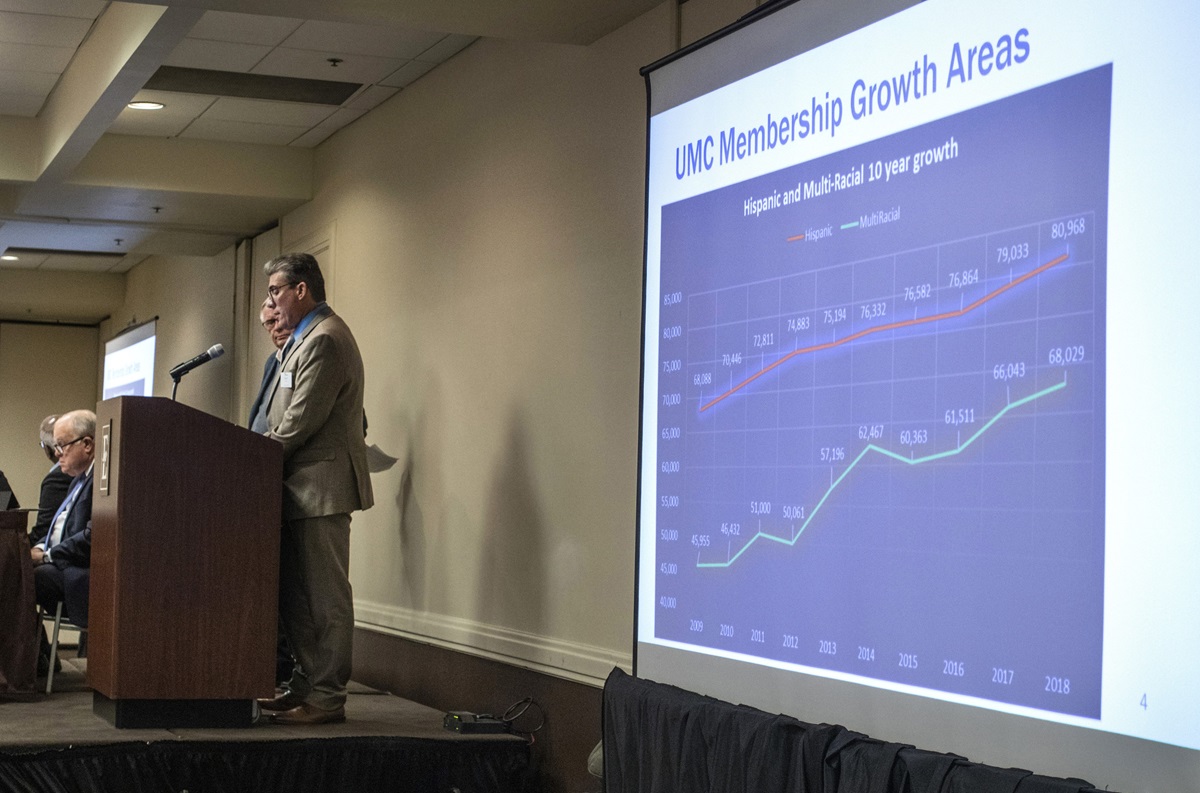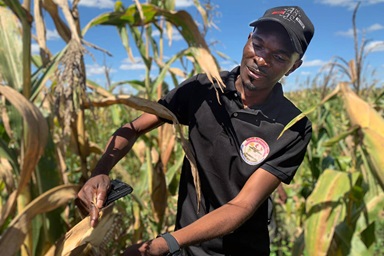The U.S.’s majority status in The United Methodist Church is coming to an end — and may be there already.
That’s according to projections from the denomination’s General Council on Finance and Administration — based on the continuing decline in U.S. membership as much as growth in Africa.
According to the agency’s forecast, total membership in the central conferences — church regions in Africa, the Philippines and Europe — will exceed that of the U.S. jurisdictions in 2020.
“Based on trends that have occurred over the last several years, we are annually averaging a decline of 2.0% overall for the jurisdictional membership,” Kevin Dunn, the agency’s director of data services, told the GCFA board at its November meeting.
“We may fall below 6 million (U.S.) members by 2025.”
It’s a significant development for a church whose governance and history have both helped shape and been shaped by the United States, where the denomination got its start in 1784.
Dunn said the U.S. decline has largely resulted from members’ deaths — people leaving The United Methodist Church for the church triumphant.
However, starting in 2014, he said, the overall drop has exceeded the number of funerals. U.S. worship attendance also has been shrinking as a percentage of overall membership for the past decade.
Dunn noted that United Methodist numbers are in keeping with overall U.S. religious trends. In October, Pew Research Center reported losses across Christian groups while showing the religiously unaffiliated rising to more than a quarter of U.S. adults.
Even with shrinking U.S. rolls, The United Methodist Church is still the country’s third largest denomination — behind the Catholic Church and Southern Baptist Convention.
The most recent data GCFA actually has on hand is the U.S. membership and attendance figures for 2018. Unequal infrastructure and technology typically mean that membership reports are usually out of sync between the U.S. and the rest of the globe.

Image from PowerPoint presentation of the General Council on Finance and Administration from its Nov. 15 meeting in Nashville, Tenn. Slide shows jurisdictional (blue) and central conference (orange) trending membership numbers. Image courtesy of GCFA.
The agency’s most recent data for the central conferences is from 2017, when the denomination counted more than 6.4 million members in Africa, Europe and the Philippines. That’s up from about 5.7 million members in 2015.
However, the central conference total comes with an asterisk. On its data services website, GCFA notes that the 2017 numbers reflect the most recent submitted. Where conferences have not reported any new data, the agency carries over numbers from previous reporting.
What about General Conference?
Membership plays a large role in determining how many delegates each annual conference can send to General Conference, the denomination’s top lawmaking body.
The Book of Discipline outlines a statistical formula for delegation size based on the number of clergy and professing lay members of each annual conference. Each annual conference must have a minimum of one lay and one clergy delegate.
However, the latest figures from the General Council on Finance and Administration will not be reflected in the composition of next year’s General Conference.
The Rev. Gary Graves, General Conference secretary, determined the size of each annual conference’s delegation in 2017, based on data in the most recent annual conference journals submitted to GCFA.
Of the 862 delegates in 2020, 55.9% will be from the U.S., 32% from Africa, 6% from the Philippines, 4.6% from Europe and the remainder from concordat churches that have close ties to The United Methodist Church. Compared to the 2019 special session, the U.S. will have fewer delegates overall, while African delegations gain 18 and the Philippines two.
The Book of Discipline outlines a statistical formula for delegation size based on the number of clergy and professing lay members of each annual conference. Each annual conference must have a minimum of one lay and one clergy delegate.
However, the latest figures from the General Council on Finance and Administration will not be reflected in the composition of next year’s General Conference.
The Rev. Gary Graves, General Conference secretary, determined the size of each annual conference’s delegation in 2017, based on data in the most recent annual conference journals submitted to GCFA.
Of the 862 delegates in 2020, 55.9% will be from the U.S., 32% from Africa, 6% from the Philippines, 4.6% from Europe and the remainder from concordat churches that have close ties to The United Methodist Church. Compared to the 2019 special session, the U.S. will have fewer delegates overall, while African delegations gain 18 and the Philippines two.
“We have some good news,” Dunn said. “Our Hispanic and multiracial growth has consistently been trending upwards 2% to 3% (a year) in each category.”
Between 2009 and 2018, the number of U.S. members identifying as multiracial increased from 45,955 to 68,029. In the same period, the number of Hispanic United Methodists has grown from 68,088 to 80,968.
The predominantly Hispanic Christ’s Foundry Fellowship in Dallas is an example of that growth. The North Texas Conference decided more than 10 years ago to plant a congregation in a growing Latino neighborhood.
The congregation that began as a small group worshipping in various locations has grown to 166 members and 228 in average weekly attendance.
The Rev. Lucia “Lucy” French, the congregation’s associate pastor, attributed the congregation’s growth to several programs the church instituted early on. These include small groups, a worker association to help people find employment and Family Wednesday — Miercoles de Familias — a time for children’s choir, youth group, parenting classes and marriage instruction. French, who came to Dallas from Quito, Ecuador in 2006, found her calling as a pastor by leading the Wednesday night programs.
“Everything that has happened in the growth and development at Christ’s Foundry has been the result of many collaborators, each bringing their unique strengths, resources, talents, and dedication to the effort,” she said, with interpretation from her husband, John.
Christ’s Foundry, which now has a building to call its own, is also now taking a lead role in the North Texas Conference’s response to recent tornadoes that wreaked havoc on the city.
“The congregation of Christ’s Foundry has been and continues to be blessed by the community, and has shown its ability and willingness to be a blessing to others in the community by living their faith,” the pastor said. “While head counts and budgets have their place, this is the best measure of success.”
North Texas Conference’s Bishop Michael McKee also is the president of the GCFA board. He told the board that while worship attendance is very important, it offers an incomplete picture of what’s happening at many United Methodist congregations such as faith formation and mission activities.
“This is not an argument with the statistics at all,” he said. “It’s just an acknowledgement that we have to think about these things in some other ways because we may have more people engaged than our worship numbers show.”
Hahn is a multimedia news reporter for United Methodist News. Contact her at (615) 742-5470 or newsdesk@umcom.org. To read more United Methodist news, subscribe to the free Daily or Weekly Digests.
Like what you're reading? Support the ministry of UM News! Your support ensures the latest denominational news, dynamic stories and informative articles will continue to connect our global community. Make a tax-deductible donation at ResourceUMC.org/GiveUMCom.




